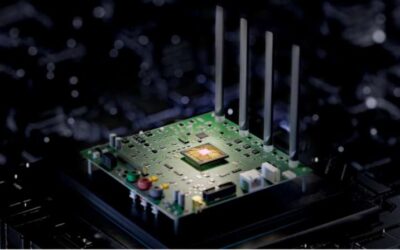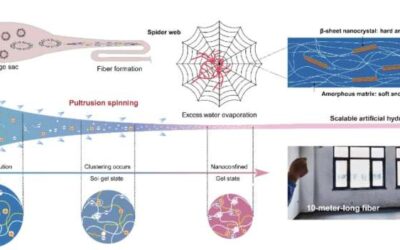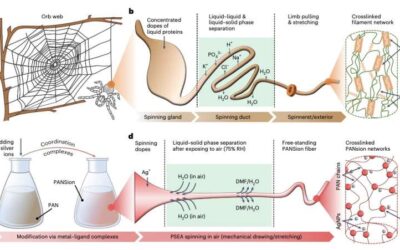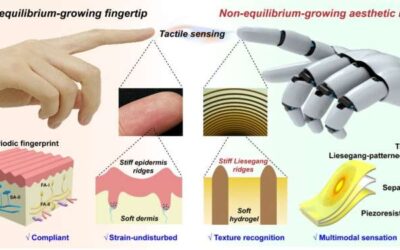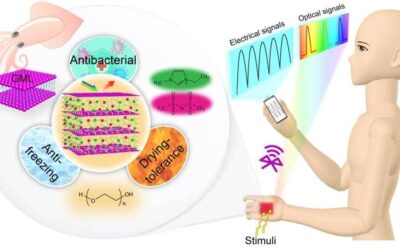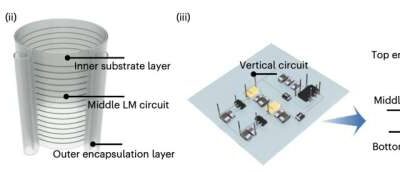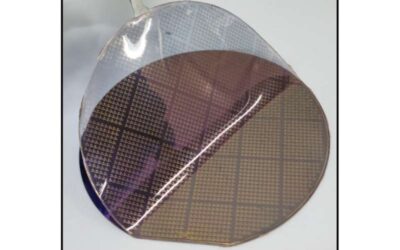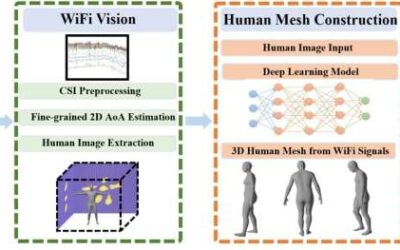Advanced communication technologies, such as the fifth generation (5G) mobile network and the internet of things (IoT) can greatly benefit from devices that can support wireless communications while consuming a minimum amount of power. As most existing devices have...
Hi Tech & Innovation
Self-healable and crack-resistant hydrogel microfibers inspired by spider silk
In recent years, material scientists have been creating new materials with a variety of advantageous properties that could enhance the performance of different technologies and devices. This includes hydrogel-based fibers and artificial skins, which could help to...
A technique to spin soft functional fibers for smart textiles and wearable devices
In recent years, material scientists have been trying to develop soft and flexible fibers that could be used to create new electronics. These fibers could, for example, be used to create smart sensing clothes, energy solutions, and wearable biometric devices.
An ionic skin that could provide robots with tactile sensation and texture recognition capabilities
Through their fingertips, humans can touch and grip onto things in their surrounding environment, but they can also sense the tactile properties of objects and detect other atmospheric changes. Fingertips are incredibly sensitive parts of our skin, with unique...
A squid-inspired artificial skin that endures harsh environments
Countless hardware and software solutions created over the past decades draw inspiration from animals and natural phenomena. This includes electronic skins (e-skins), flexible and stretchable electronic circuits designed to replicate the human sense of touch or...
Using a solidified liquid metal to build 3D flexible electronics
In recent years, engineers and material scientists have been trying to identify particularly promising materials for creating flexible electronics of different shapes and sizes. Ultimately, these electronics could be integrated in wearable devices (e.g., smart watches...
A new elastic polymer dielectric to create wafer-scale stretchable electronics
Over the past few years, material scientists and electronics engineers have been trying to fabricate new flexible inorganic materials to create stretchable and highly performing electronic devices. These devices can be based on different designs, such as rigid-island...
A wi-fi sensing system that creates 3D human meshes
A 3D mesh is a three-dimensional object representation made of different vertices and polygons. These representations can be very useful for numerous technological applications, including computer vision, virtual reality (VR) and augmented reality (AR) systems.
A three-stage authentication system for the metaverse
In recent years, many computer scientists have been exploring the notion of metaverse, an online space in which users can access different virtual environments and immersive experiences, using VR and AR headsets. While navigating the metaverse, users might also share...
A new approach for the 3D printing of hydrogel-based electronics
Hydrogels are three-dimensional (3D) polymer networks that do not dissolve in water but retain large amounts of liquids. Due to this advantageous property, hydrogels are particularly promising material platforms for both biomedical and environmental applications, as...

